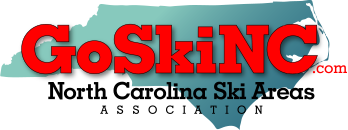Snowmaking in North Carolina
Snowmaking in North Carolina
The mountains of North Carolina have the highest elevations and the coldest climates in the South. So don’t let your hometown weather fool you into thinking that the conditions in the mountains are the same. With every thousand-foot rise in elevation there is usually a 3 or 4-degree drop in temperature. Therefore the mountain areas are usually at least 15-20 degrees cooler than the lower elevations.
To supplement an average snowfall of 70 inches, North Carolina Ski Areas’ state-of-the-art snowmaking capabilities provide 100% slope coverage. When temperatures fall below freezing, we take advantage of these opportunities to make snow.
Snowmaking in North Carolina is key to creating fantastic slope conditions. The art of snowmaking involves creating a mixture of air and water under pressure and spraying it out of a snow gun. The mixture then turns to snow and falls to the ground. Each Ski Areas’ snow making personnel diligently monitors temperature, humidity and wind to produce the most optimum skiing/snowboarding conditions.

This commitment to snowmaking allows all NC ski resorts to offer consistent snow conditions to skiers & snowboarders, even after mild periods.
Hours of snowmaking per season range from 600-1500, depending on the weather and the specific Ski Area. Some Area’s go as far as stockpiling snow in key slope locations. When the weather turns warm or even to rain, these large piles of snow are strategically spread over decreasing snow base areas.
Each North Carolina Ski Area is proud of its snowmaking and grooming crews who vigorously work throughout the season, day and night, taking advantage of the mountain climate to blanket the slopes with new machine made snow.
Very often it becomes necessary to make snow during skiing/snowboarding sessions. Here are a few tips for skiing/snowboarding during snowmaking operation.
- Dress properly for the weather. Generally it is 32 degrees Fahrenheit or below during snowmaking operation.
- Wear goggles to protect your eyes from precipitation (natural or machine made) and sunlight.
- A scarf or some other form of face protection may be helpful.
- Avoid skiing/snowboarding too close to the snow guns. The snow farther away from the snow gun is often better.
- Ski/snowboard with caution whenever visibility becomes poor.
- Always contact the specific area you will be visiting ahead of time for slope and weather conditions. Online slope and weather conditions can be found at www.goskinc.com/reports or generally each Ski Area will have a slope conditions page updated twice a day.

